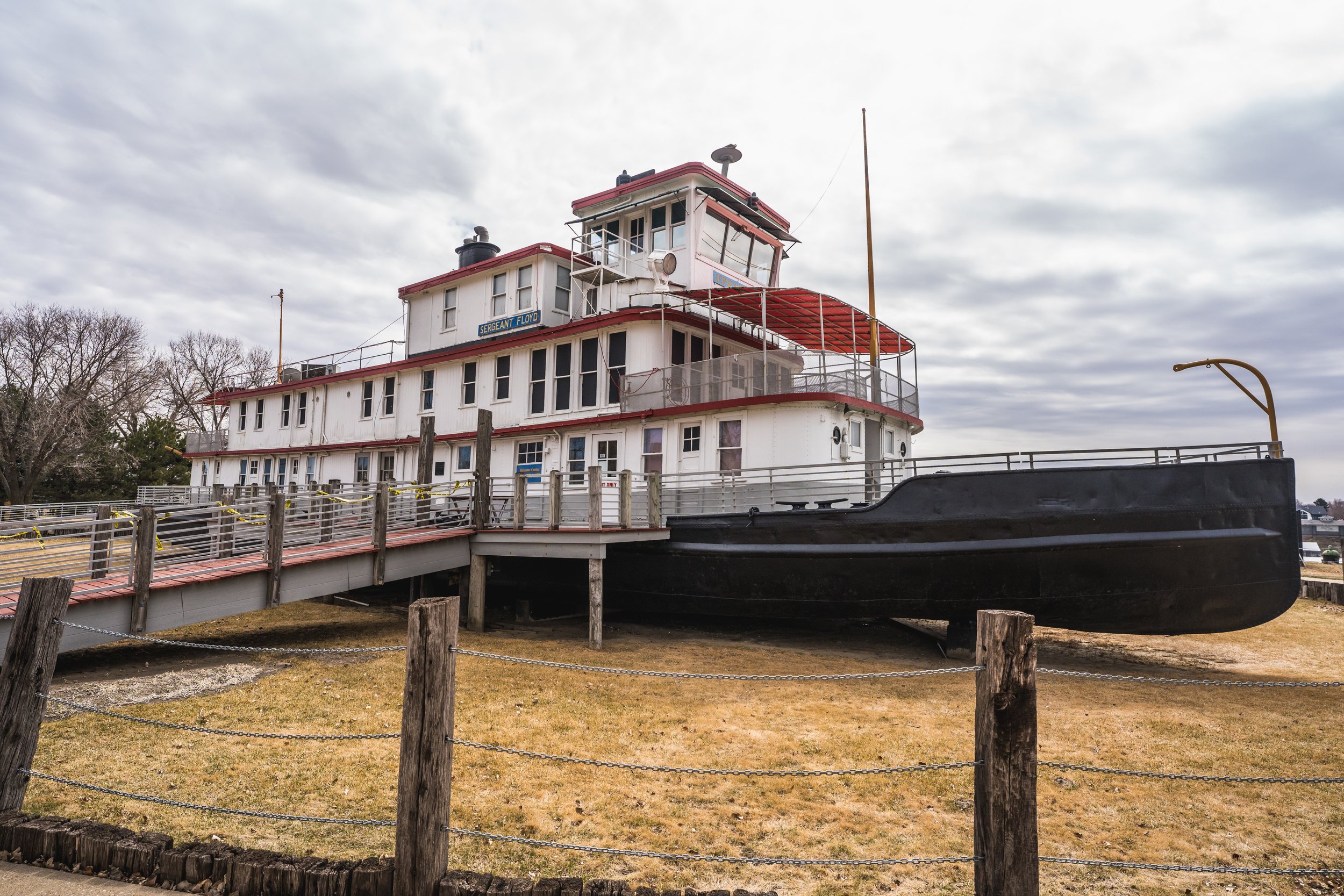
Sioux City History
Your link to the past.

Grandview Park & the Band Shell
As the city grew around the grassy acres, Grandview Park provided a place to play, enjoy nature and listen to music. In later years, a rose garden, band shell and playground were added for everyone's enjoyment.

Historic Fourth Street
“Historic” or “Lower” Fourth Street refers to the two city blocks between Virginia and Iowa Streets in downtown Sioux City that contain thirteen structures dating from 1889 to 1915. The majority of the buildings in the district have undergone extensive renovation. Now known as the Fourth Street Historic District, the area is one Sioux City’s most popular entertainment spots.

Peirce Mansion
The Peirce Mansion was built by John Peirce as a family home in 1890 for $80,000. The Pierce family lived in the house from 1891 to 1893 when John Peirce lost his fortune in the national depression.

Prospect Hill
On Prospect Hill is a monument erected in memory of three pioneer missionaries. These men, Reverends Jackson, Cleveland, and Elliot, were on their way to the west to teach Christianity. All of the members of the Sioux City settlement were asked to attend a prayer meeting on this hill. The monument was built later to commemorate this event.

Riverside Park Area
The Riverside Park area changed hands many times in the early years of the city. The park itself became a hub of entertainment and leisure activities. The main attraction to the area was the Sioux River. Unlike the channelized river of today, the old Sioux was a slow-moving, picturesque river up to two hundred yards in width. Because people had no air conditioning, being around the water was a definite summer attraction.

Schools in Early Sioux City
On April 26, 1857, a teacher arrived on the first steamboat of the spring season. Her schoolhouse, the first in Sioux City, was located on a sloping lot on the east side of Nebraska Street, between Seventh and Eighth Streets. In 1868, the city’s first brick schoolhouse was erected on the east side of Jackson Street between Fourth and Fifth Streets. By 1890, the Sioux City School district boasted eleven wooden buildings and twelve brick buildings. As high school enrollment increased, the dramatic Sioux City High School (later Central High School) was dedicated in May 1893.

Sgt. Floyd River Museum & Welcome Center
The M.V. Sergeant Floyd was named for Sergeant Charles Floyd, the only member of the Lewis and Clark Expedition to die on the trek to the Pacific Northwest. The vessel was a working boat used for towing, surveying, and inspection work on inland waterways. After it was decommissioned, the boat was brought to Sioux City, the place where its namesake died.

South Bottoms
The South Bottoms Memorial was created in 1997 to honor the pioneers, immigrants, and families who made the South Bottoms area of Sioux City their home. This area of the Floyd River Valley was bounded on the north by Third Street and on the south by the Missouri River.

Woodbury County Courthouses
William Thompson’s little log house at Floyd’s Bluff was selected as the first county seat of Woodbury County in 1853. The little town of Sioux City became the county seat in the spring of 1856. Today, the Woodbury County Courthouse is listed on the National Register of Historic Places and is designated as a National Historic Landmark. It is the largest publicly owned prairie school building in the world.

Douglas Federhart
Douglas Federhart was born in Sioux City in 1950 and grew up with his family on the West Side at 1906 West 19th St. He grew up playing in the Loess Hills and connecting with the many extended family members who lived in town.
